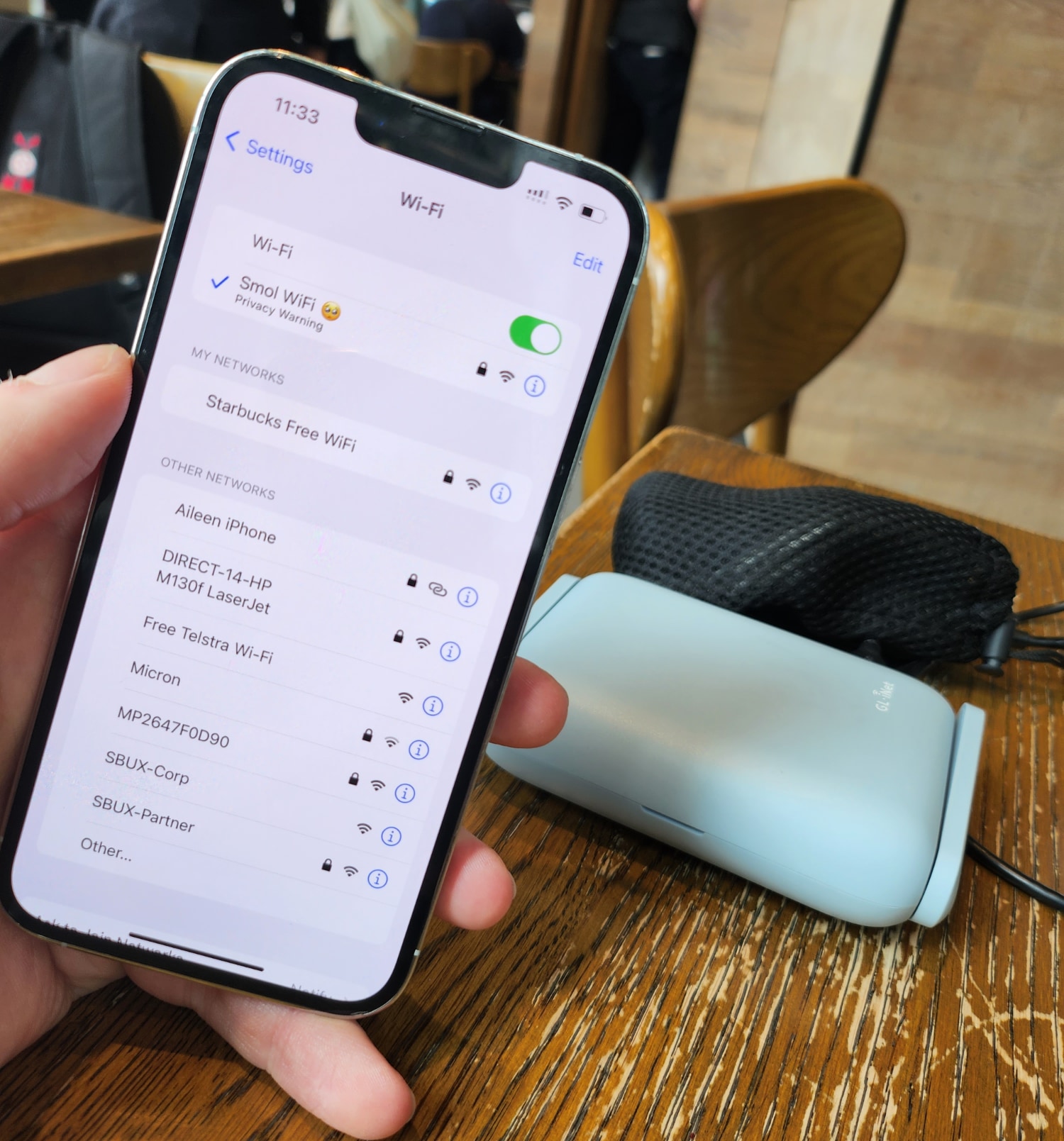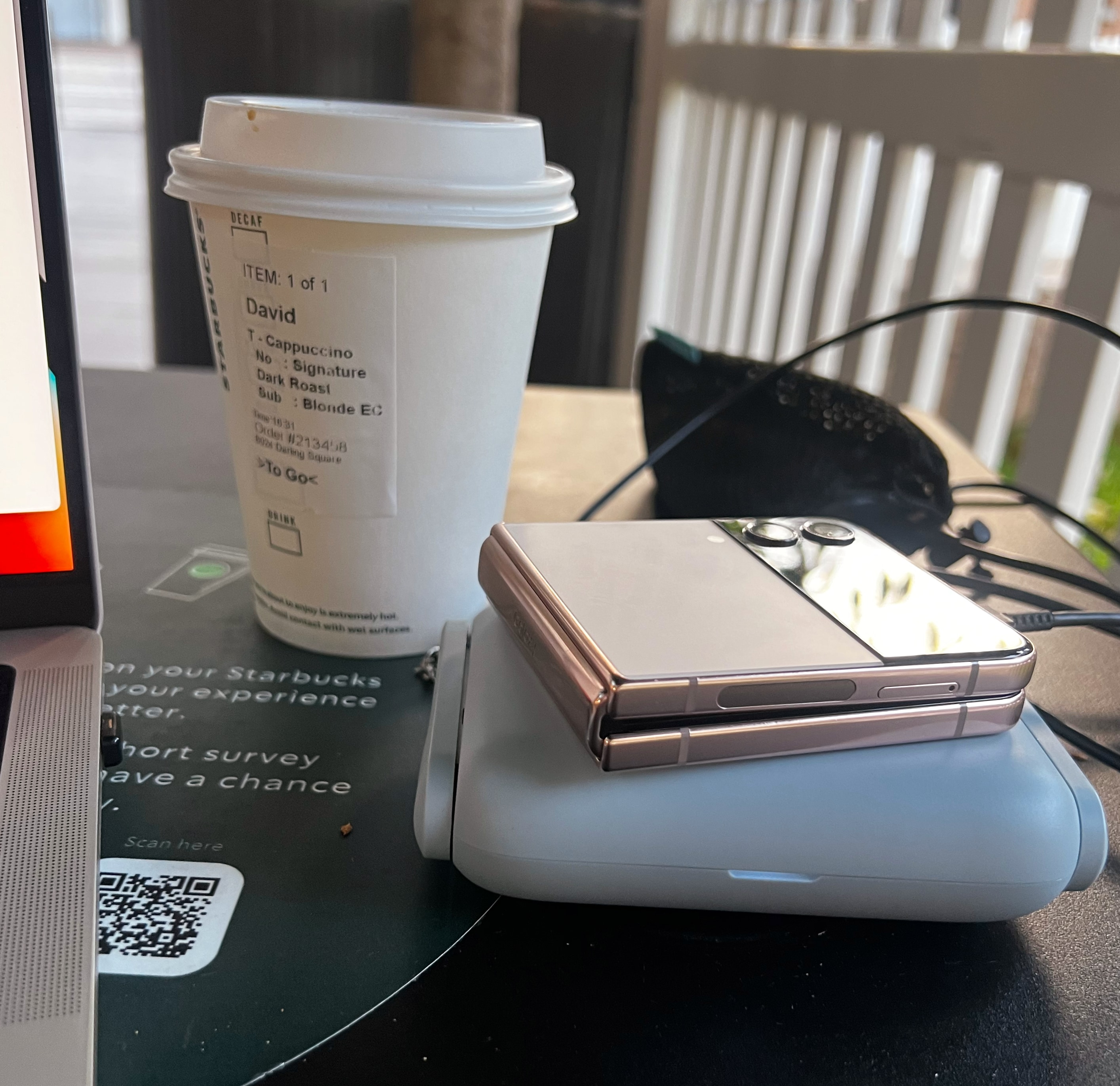Travel routers are a thing I didn’t know existed. It makes sense that they do when you think about it, but I was never in a situation where one might have been necessary. Recently, I started a months-long sabbatical in Australia, and part of my research of what to pack on subreddits like /r/onebag landed me on travel routers!
After a bit of research, I went out and ordered the GL-Inet Beryl AX, a small cute mint-colored box that would fit into my pocket if I wanted to.
What are travel routers, and why I wanted one
As the name implied - routers for traveling (duh). They are usually very small, and feature WiFi and an ethernet port. More advanced models have more functionality like VPN, Wireguard tunnel, and whatnot, depending on your needs.
The appeal for me is bringing my own network with me. If I hop between hotels, Airbnbs, and cafes, I don’t have to worry about setting up all my devices to use that network again and again - all I have to set up is the travel router and the rest just works. The router can also add another layer of security with things like DNS-over-HTTPS, OpenVPN connections, or tailscale Wireguard tunnel on the router level, so none of my end devices have to know about any of that. I have one less thing I have to trust (to some extent).
Another, maybe more silly reason was mDNS and Chromecast: One of the devices I wanted to bring with me was my small Chromecast because of its size, but those devices usually just won’t work with Hotel WiFis because they disable mDNS (not to mention the PITA to keep setting it up with new Airbnb wifis). If I have my own pocket WiFi with me, however, I can use the Chromecast just fine, for the occasional movie session.
All in all, a travel router I can pocket sounded like a good idea.
The Beryl AX, and what it can do
After a bit of research, I decided to buy the GL-Inet Beryl AX. It was the right mix between form factor, features, and price. Honestly, I rather wanted to have the excellent-looking Firewalla Purple, but that was $99 vs $329, so the Beryl is what I ended up getting.
What’s really cool about the Beryl, besides its small form factor, is that it can support multiple WAN backbones, and fallback or load balance between them. One of those WANs is the WiFi Repeater: The Beryl can hook into any available WiFi network and use that as backbone to create its own WiFi network. That makes it an excellent option for cafes and hotels that likely won’t give you an Ethernet port to use.

But where it gets even more convenient is that the Beryl also supports USB tethering, so I can plug my iPhone or Android device with unlimited data SIM, and tell the Beryl to use the USB tethered connection as another WAN, then set it to either fallback between Hotel/Cafe wifi and USB tethered connection or just load balance between them for extra bandwidth.
This also means that I can either repeat my mobile hotspot from my phone or use the USB-tethered connection alone to create a full WiFi network that all my devices can use, for when the Airbnb or Cafe WiFi is especially spotty, without having to change the WiFi network on the devices. Bonus points for the USB port being USB3 and being able to charge my phone while the connection is tethered (USB tethering is something the Firewalla Purple for example can’t do).
That alone would have been enough to make me happy, but there are a few more cool tricks it can do:
- iOS and Android apps to manage the device - no need to use the web-based admin UI
- Connect to NordVPN, my VPN provider of choice (or other OpenVPN/Wireguard providers). Many people use this to connect to their portable network to their home network
- Separate main and guest networks (for your friends) which can be on separate VLANs and isolated, or have only one of them go through the VPN
- Connect to my Tailscale tailnet, and even use other devices as exit nodes
- Baked-in NextDNS and DNS-over-TLS/HTTPS support
- Mac Address randomization and cloning (for those pesky networks with Mac address filter)
- Dynamic DNS updating
- WiFi 6 and AdGuard (not using this personally because of NextDNS
The Beryl is OpenWRT based, so you get full SSH access and Luci interface on top of the GL-Inet admin UI, with very fine-grained control over inner workings like firewall and DNS.
Then lastly, why I ended up packing this router a lot more than I thought I would: It can be powered through USB-C, so any power bank with USB-PD will work great (or just connecting it to my Macbook). I had it powered in my backpack quite a few times while in Cafes. My 10,000 mAH Anker can usually power it for about 6-8 hours without problems.

The not-so-great
All of the stuff I wrote above is honestly great… if it would just work reliably. And this is where I started getting frustrated with this particular device: Reliability. It can be really damn finicky, and there is often a “but” attached to the great parts.
For example:
- NextDNS and DNS-over-TLS are great, but of course, this also means captive portals just won’t work because they can’t hijack the DNS queries. When disabling NextDNS and switching back to auto, then restarting the router, it just forgets your NextDNS ID so you can’t just switch it back on
- Tailscale support baked in is great, but it required a lot of messing with OpenWRT firewalls to have it work properly. MagicDNS works when setting up custom DNS forwarding rules in Luci on the Tailscale domain, but those get wiped whenever you switch the DNS to auto or back to NextDNS in the GL-Inet UI
- Multi-WAN is great, but it often tells me that it doesn’t have an internet connection on the WAN for whatever reason. Could be an issue with the power source I’m using (people on the forums suggested that), could be with the connection, could be a bug when using tethered connection + repeater at the same time (another suggestion from the forums) - I don’t know
- NordVPN is great, but it can’t refresh configurations automatically and connect to the optimal server in a region. I can set it up to connect to, for example,
au531.nordvpn.com.udp, but then it will always connect to that server
More often I spend the first 10-20 minutes of my session just tweaking settings on the admin UI until my connection finally worked, and often wondered why I’m not just sharing my phone connection to my Macbook directly instead of going through the Beryl. I had it countless times that devices connected to my phone directly worked flawlessly, but devices that go through the Beryl which goes through my phone don’t for whatever reason when they should (may have been an issue with the power cable I used, or a bug with multi-WAN when tethering + repeater, or something else).
Maybe I’m running into these issues because I’m trying to do more with it than using it as a dumb travel router, but if those features are offered, I of course want to play with them. I’m hoping for a set-and-forget setup that I can just plug into a power outlet and it does the rest, stuff like when there’s a captive portal it temporarily disables DNS-over-TLS, or the VPN connection. I had to bookmark the admin interface IP because of how often I had to open in the past weeks just to debug something, which is not a great indicator.

So, am I happy with it?
If I had to give a verdict, I would say: Yes, I am very happy with this device. It has its quirks, but once set up, it runs smoothly, and having a travel router with me gave me a new way to think about networking while on the go.
I’m writing this blogpost while sitting in an Airbnb connected to it. I jacked the Beryl with an Ethernet cable into the existing router (that only supports 2.4G by the way) and created my own network on top of the existing one. That’s where the picture above is coming from.

The router here is sadly not a fiber-based one, but one of those 4G stations, so the networking speed fluctuates drastically. When the connection was particularly bad, I connected my Android phone to the Beryl (Android phone is set to start in tethering mode when USB is connected) and immediately improved the connection for all my devices. That is honestly a damn cool option to have, kind of like a modular connection upgrade.
Another time I had to restore a few bigger files on a bad guesthouse network. The tethered connection alone wasn’t enough, so I used a USB-C Ethernet dongle, connected both my iPhone with 5G SIM (tethered) and my Android with unlimited 4G SIM (ethernet) on different cellular networks to the router at the same time, then set it to load balance between all 3 with priority on the unlimited SIM -> 5G SIM -> WiFi network. I was easily able to finish my bigger download with this burst of additional bandwidth.
I didn’t think I would need a travel router, but I’m glad I bought it. It’s been only a month, but the small Beryl is already becoming a staple in my travel bag.
